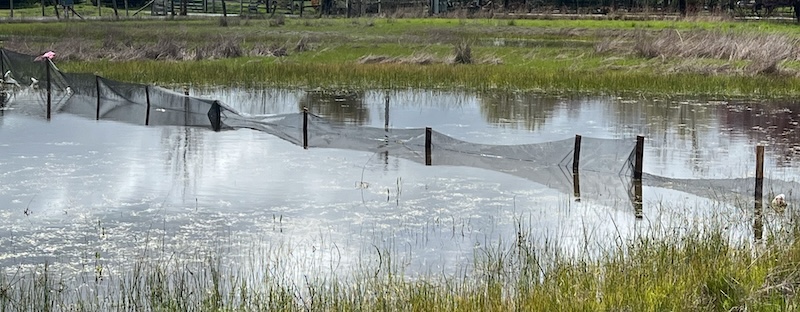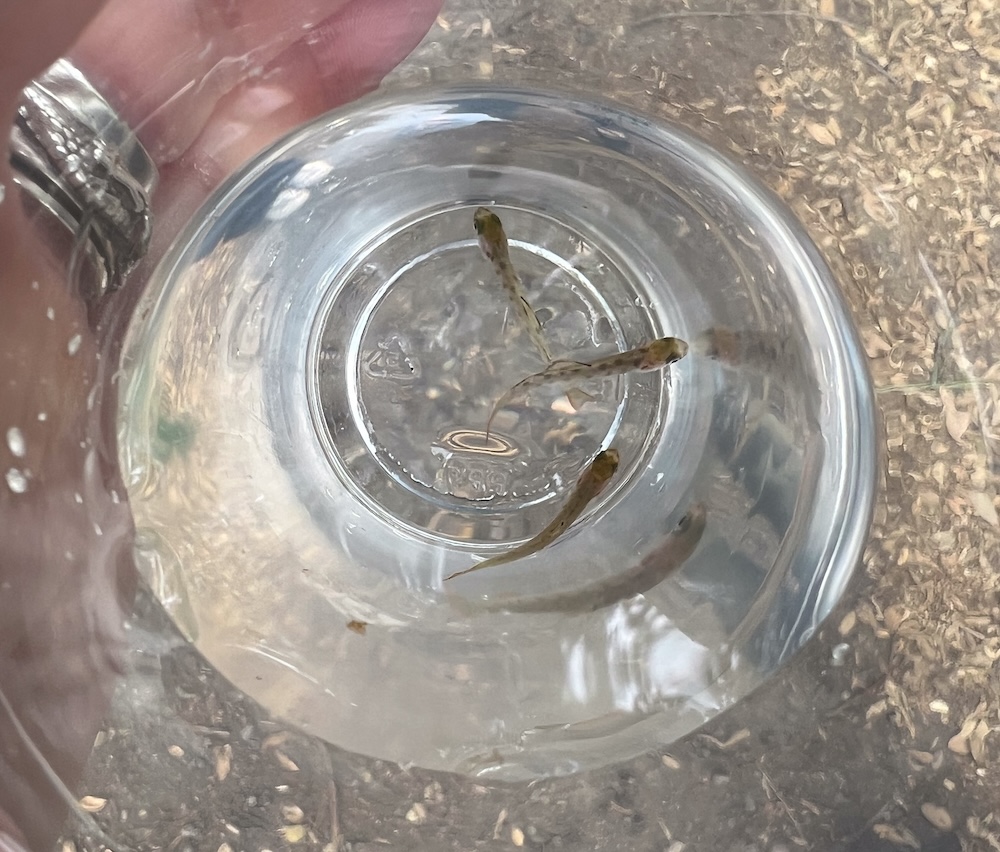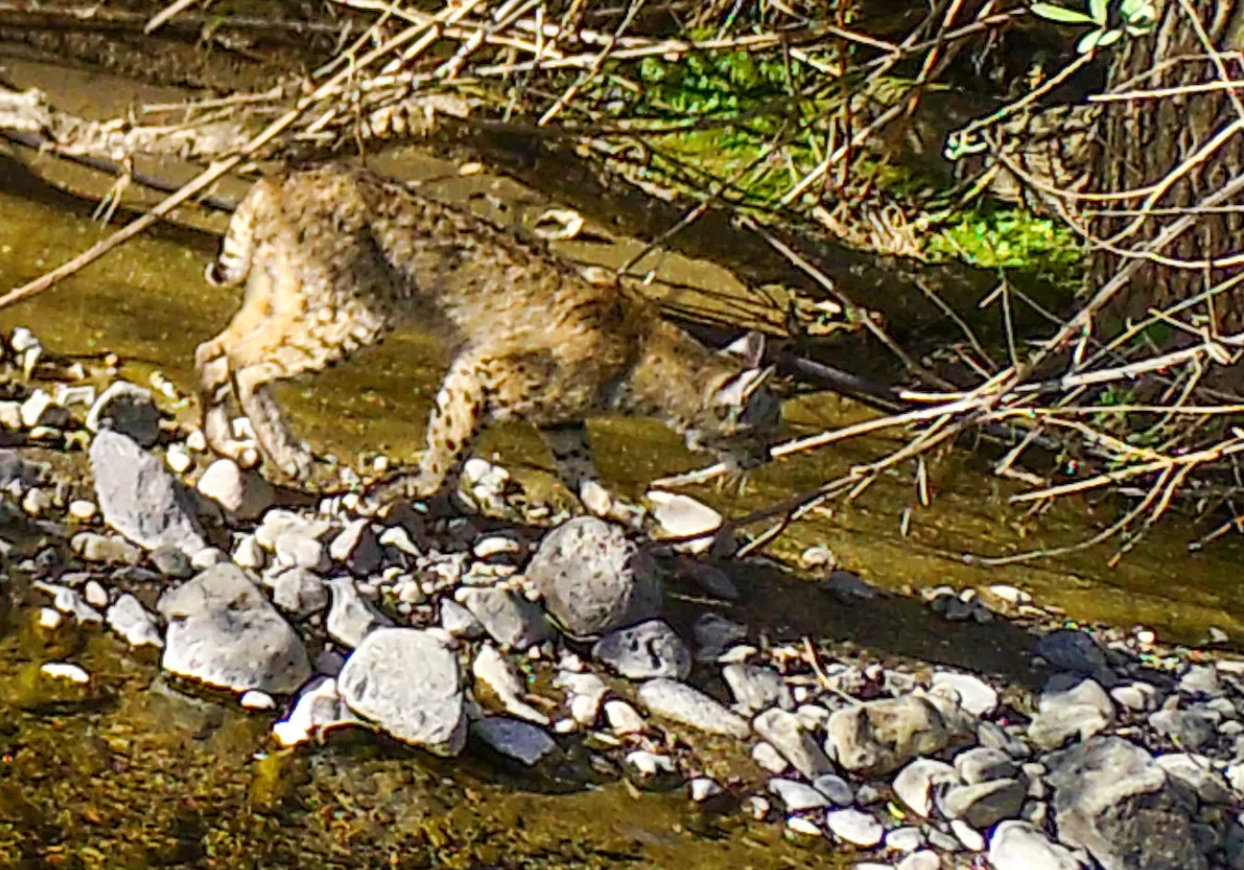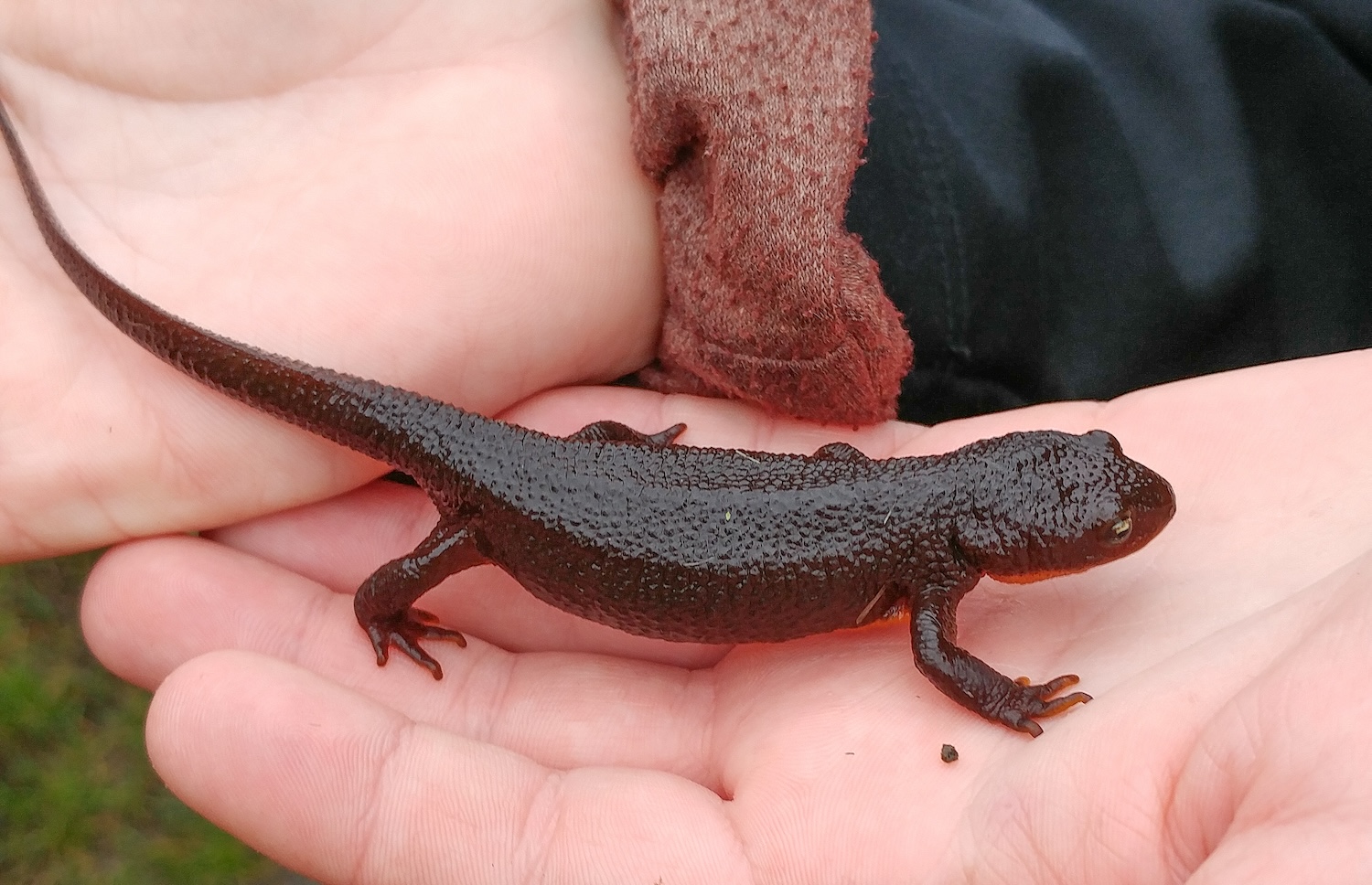Oh my . . . it’s been a while since I posted anything. I had such good intentions last semester, but never found the time to sit down and write. Over the next little while, I’m going to go back and post about cool things that happened last year, but for now, I thought I’d jump back in by moving forward with some content that is timely for the beginning of a new semester: arrangement games. This isn’t anything particularly new or groundbreaking – people have been doing these things for years – but I thought I’d do a quick round up of some of the ones that I find work particularly well.
Read moreCategory: Science Education
California Tiger Salamander Research

Earlier this month, SSU graduate student Jesse Schmieg offered my Vertebrate Biology students an amazing experience: my students were hosted at Jesse’s field site, where they are researching the interactions between larval tiger salamanders and predaceous diving beetles in seasonal pools. Our main task of the day: to help Jesse set up this season’s experiment. This involved “bisecting” each vernal pools into two halves, using mesh fencing. Throughout the season, Jesse and their team of research assistants will remove predaceous beetle larvae from one half of each pool, while leaving the beetle population undisturbed in the other half. Then, they will perform monitoring to see if there is any difference in the salamander populations related to the removal of these insects.
Read moreSteelhead Release in Copeland Creek

This semester, I helped to organize a Steelhead Trout release on campus, as part of a program where elementary school students release trout that they had raised in the classroom. Back in February, I was approached by Michael Knappman, who volunteers at University Elementary at La Fiesta Elementary in Rohnert Park. One of their classes was participating the the Water Agency’s ‘Steelhead in the Classroom’ program (https://www.sonomawater.org/steelhead-in-the-classroom), and would have fry to release in May. Since, the California Department of Fish and Wildlife (CDFW) has designated Copeland among the acceptable release tributaries of the Russian River, Michael wanted to know if I’d be interested in helping him arrange for the fish to be released on the stretch of Copeland Creek that runs through the Sonoma State campus.
Read moreWildlife Camera Spring 2023

April 7 through May 2, 2023
My Vertebrate Biology students deployed a wildlife camera on April 7th, which I retrieved on May 20. Water was flowing in the creek throughout the entire deployment. The only unfortunate thing is that I must have set the photo resolution too high, as my 2GB memory card ran out of space on May 2. But even so, I was excited to see the variety of wildlife that we caught on the camera. This entry features just some of my favorite shots. All my wildlife camera photos (from 2016 to present) can be found on wildlifeinsights.org.
Read moreVertebrate Biology BioBlitz
May 20, 2022
09:00 to 11:30
Rather than giving my Vertebrate Biology students a conventional written final exam, I decided to do something more adventurous: have them participate in a BioBlitz on campus so I could assess their knowledge of local wildlife and identification techniques. For anyone not familiar with the term, a BioBlitz is an effort to document biodiversity in a given location during a certain period of time. While the structure of these events can vary, the idea is to identify as many species as possible in the time you are given.

For this event, I allowed the students to form teams. They would be competing against one another, and also against me. I allowed them to use any materials they wanted to use – field guides, iNaturalist, etc., in order to make identifications. I, on the other hand, would only be able to count species that I could identify without any identification guides. This was actually a win/win situation for me . . . if I found the most species, YAY, I WIN! But if any of the teams find more species that I do, that means I taught them well, so again, I WIN! 🙂 Plus, I had a big bag of prizes from the dollar store, enough prizes for everyone, although the “grand prize” winning teams had first pick. There were two ways to win: to identify the highest number of vertebrates (which is how the grades would be determined), and a runner-up prize for the team that found the highest number of species across all taxonomic groups.





One of the nine teams did identify more vertebrates species than I did, and another identified more organisms than I did across all groups, a result that I was pleased with. I think the top count of vertebrates was 32 species (identified in a period of 90 minutes). I found 30 in that time. 🙂
To see a complete list of sightings (my own, and the ones reported by my students), see the post over on Edge of the Map here: https://www.edge-of-the-map.com/2022/05/20/vertebrate-biology-bioblitz/.
Vertebrate Biology Field Trip to Fairfield Osborn Preserve
For the first time since COVID, I’m able to take my students on field trips again, and we had a fantastic one yesterday. I took my upper division Vertebrate Biology class to one of our university’s preserves: the Fairfield Osborn Preserve on Sonoma Mountain. One of the preserve’s researchers and naturalists – Julie Wittmann – was our host for the day, and our primary target was herpetofauna (reptilian vertebrates and amphibians). We started out by surveying some of the coverboards that were established in 2015, and then we headed down to the creek to look for salamanders. All along the way, we saw AMAZING wildlife, with a couple of absolute highlights for the day.
Surveying coverboards, and a Western Skink we discovered under one of them:



Ecosystem Exploration
This week, I’m using some Virtual Field materials in one of my classes (Ecosystem Exploration: https://thevirtualfield.org/virtual…/ecosystem-exploration).
In addition to the questions provided with the videos, I’m going to ask them to do some additional field journaling, including sketches. Here are the two I drew as examples (based on the Mojave Desert video), to give them some inspiration. (They aren’t expected to render things as completely as the tortoise, but the level of detail in the plant illustration should be doable by everyone).
As an aside, I think that Gopherus agassizii was the first scientific name I ever learned. My parents had hand towels with these tortoises (along with the name). Wow. It’s not actually too surprising that I’m such a nerd.
2019 Watershed Year Symposium Posters





2019 Field Biology Symposium Posters





Roberts Family Development Center Outreach, 2018
Once again I helped introduce a bunch of local youths to the wonders of biology, by tabling during this year’s Roberts Family Development Center visit to the SSU campus. As always, it was loads of fun . . . you can read my blog post about last year’s event for more details in general. SSU published an article about this year’s event, and I thought I’d share that here (since I didn’t remember to take any photos of my own this time around).
Read moreField Biology trip to Fairfield Osborn

March 15, 2018
The day of our Field Biology trip to the Osborn Preserve was rainy and a bit cold (but at least it didn’t snow on us, as it had when we were at Sonoma Mountain Ranch).
The day of our Field Biology trip to the Osborn Preserve was rainy and a bit cold (but at least it didn’t snow on us, as it had when we were at Sonoma Mountain Ranch). We were undaunted by the weather, though, as I had a cohort of extremely motivated (and knowledgeable) students, including some folks who had gone through the university’s Naturalist Training Program. We were ostensibly here to survey the coverboards on the property (which we did), but we spent a lot of time making more general observations. We were only there for a few hours, and it drizzled on us most of the time, but we saw loads of great stuff, across a wide variety of taxonomic groups.
Read more

